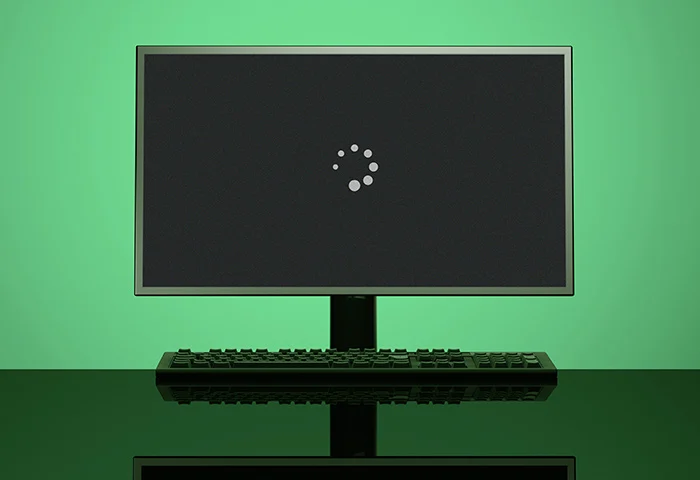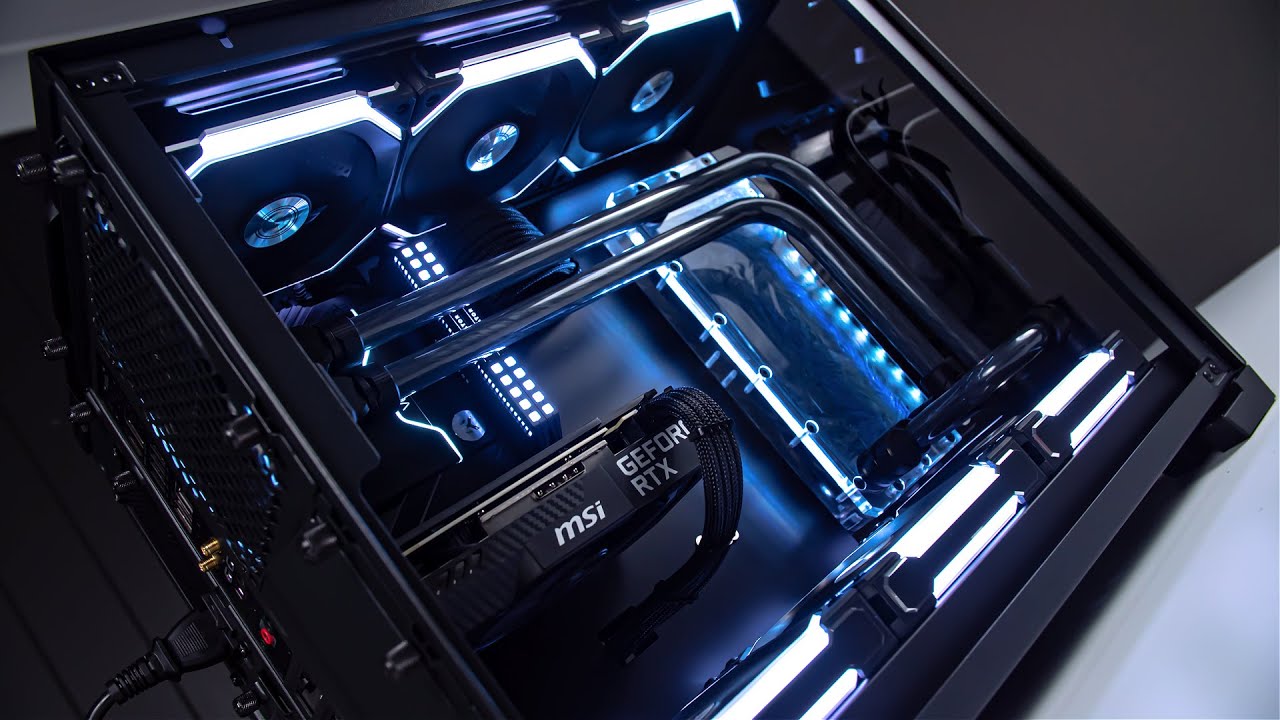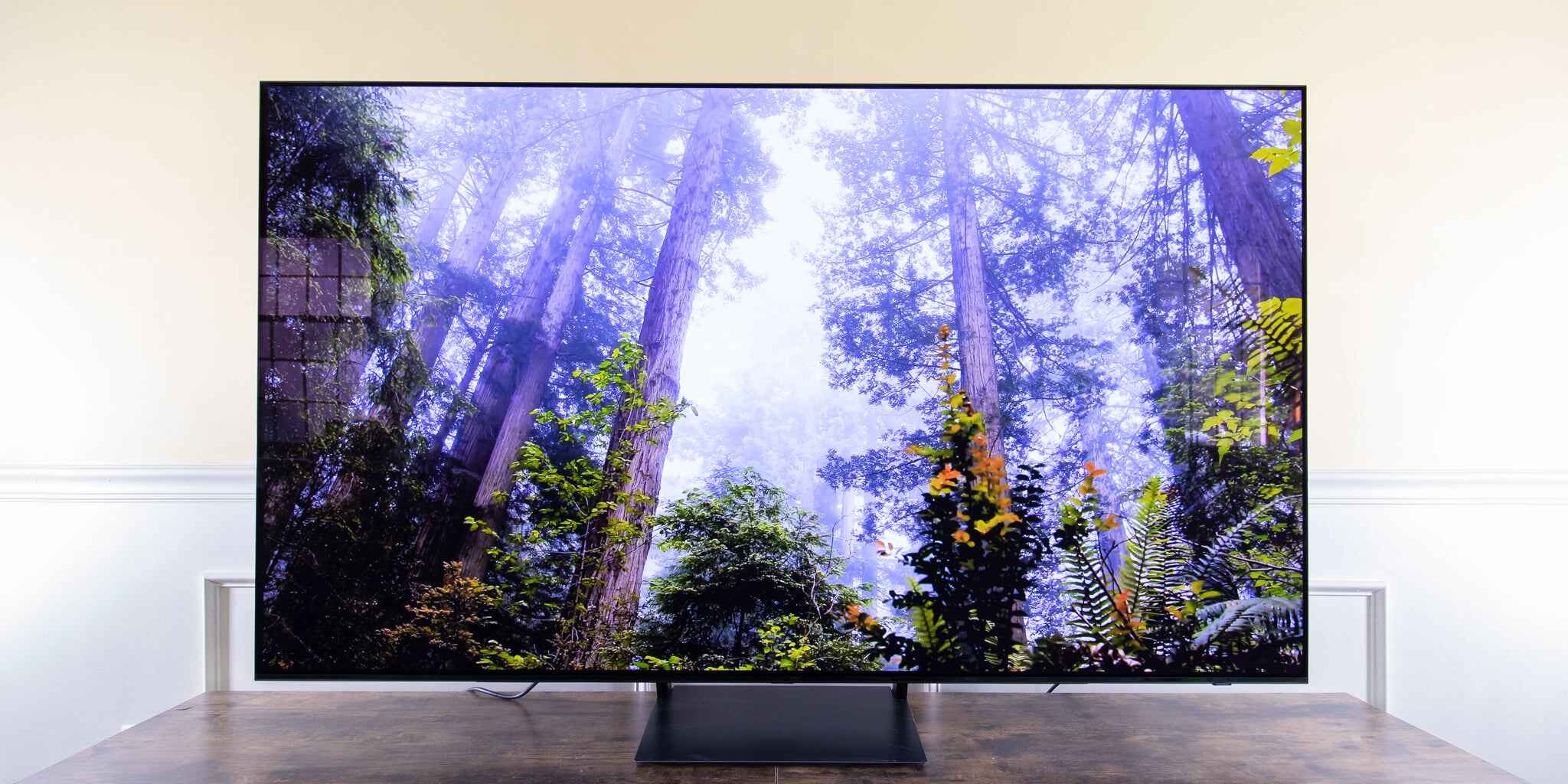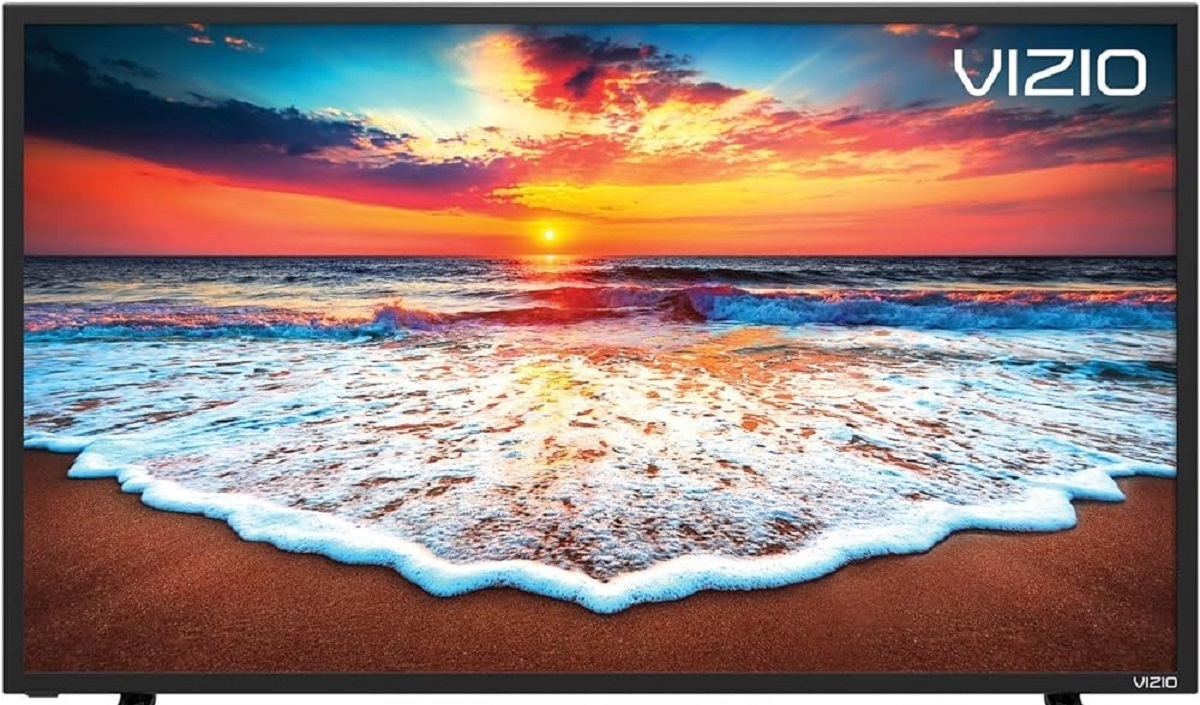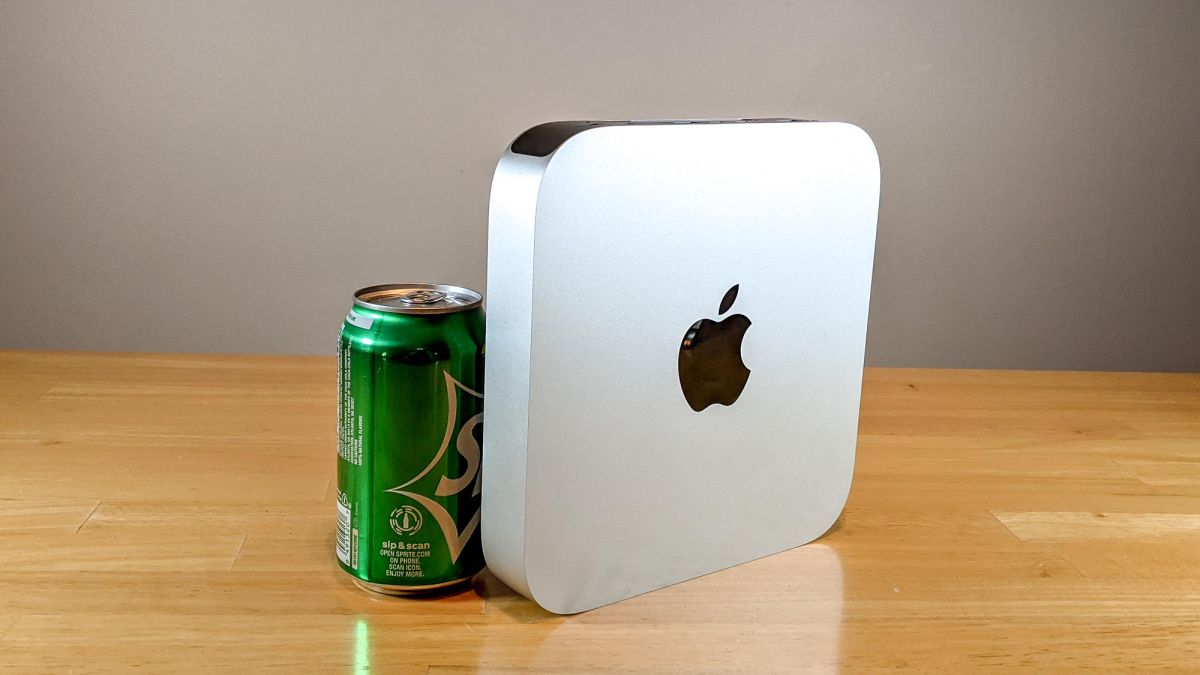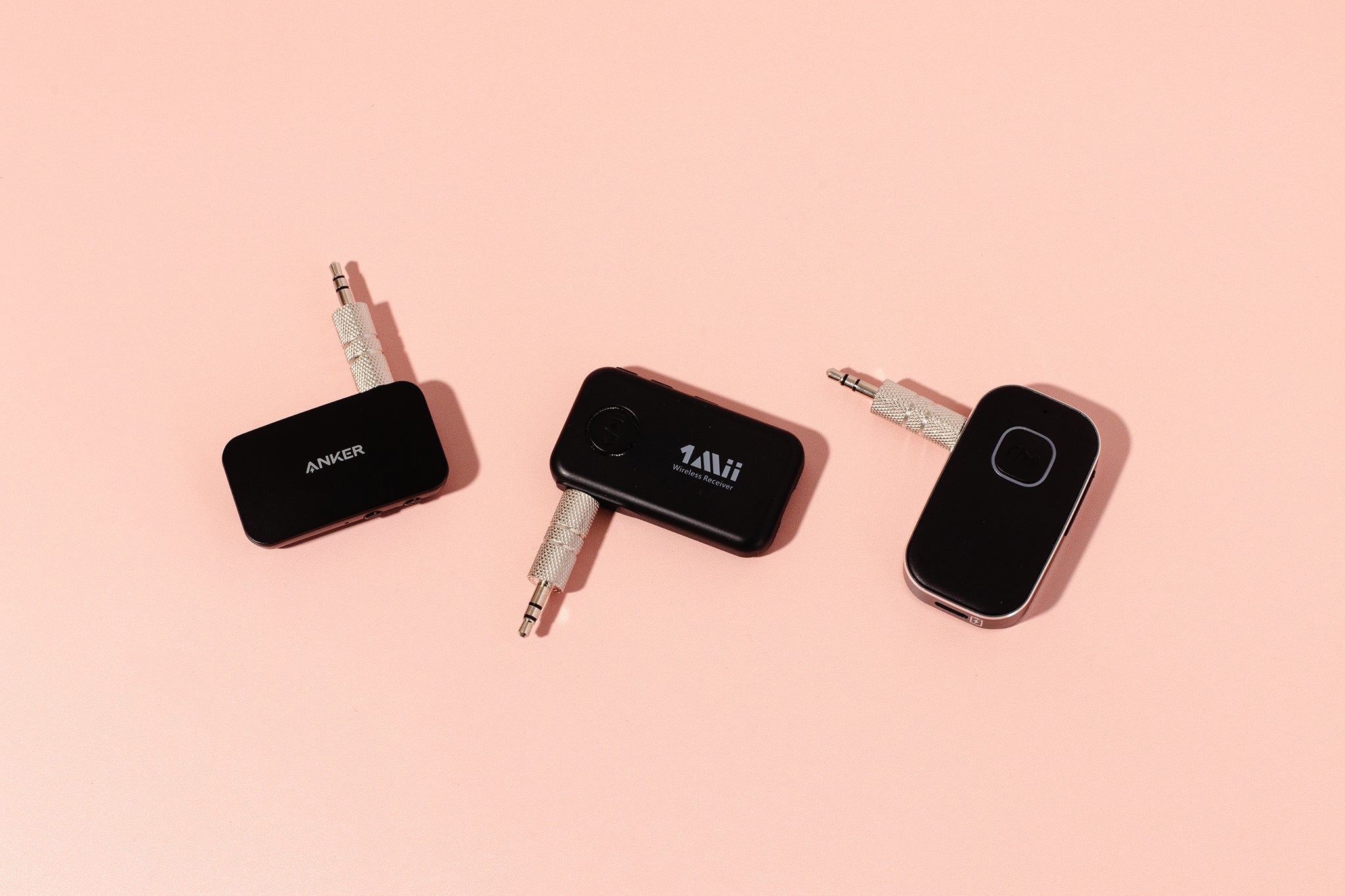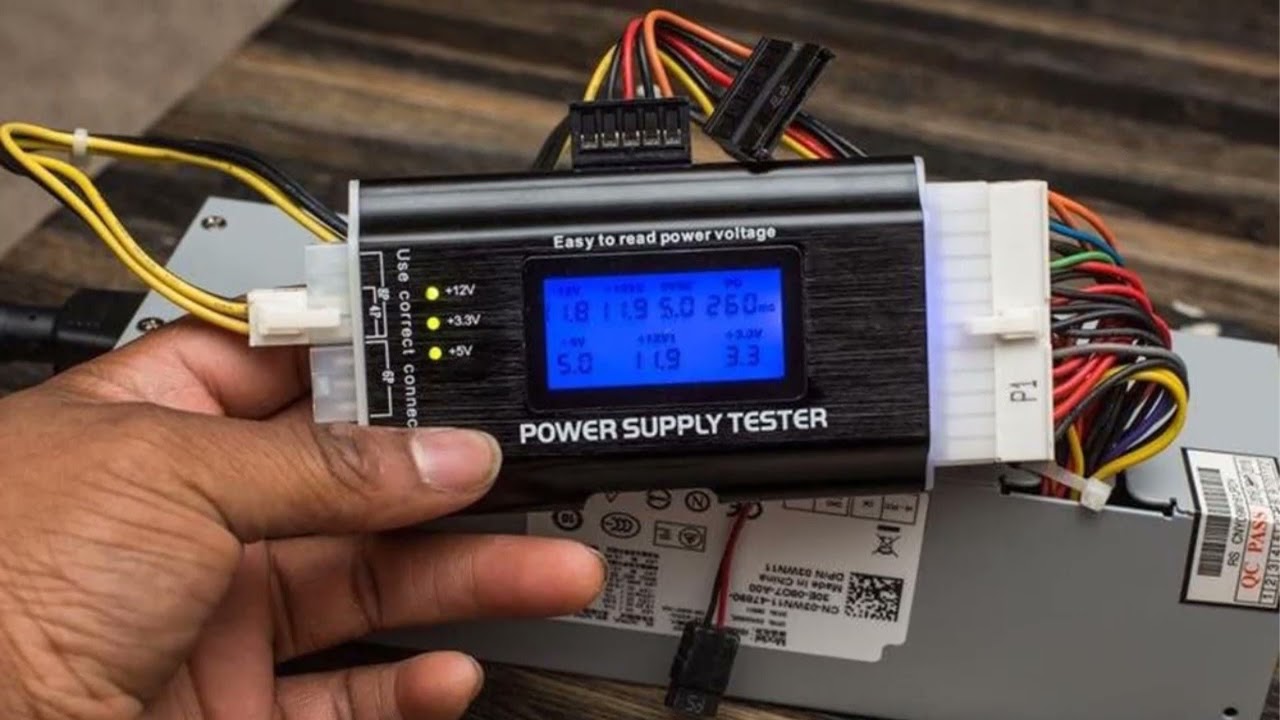Common Causes of Black Screen on PC Startup
Experiencing a black screen when turning on your PC can be a frustrating and concerning issue. There are several common causes that could result in a black screen on startup. Understanding these causes can help you troubleshoot and resolve the problem effectively.
Hardware Issues: One of the main reasons for a black screen on PC startup is hardware-related problems. This includes issues with the monitor, graphics card, or cables connecting them. A faulty or damaged component can prevent your PC from displaying anything on the screen.
Software Issues: Sometimes, software-related problems can also cause a black screen on startup. This could be due to incompatible or outdated drivers, malware infections, or conflicts with other software. Running into such issues can result in your screen remaining blank during the startup process.
Incompatible Display Drivers: Installing incorrect or outdated display drivers can lead to a black screen on PC startup as well. Display drivers are essential for rendering graphics on your screen, and when they are incompatible or not functioning properly, it can result in a lack of video output.
Troubleshooting Steps to Fix the Black Screen Issue: Now that we have identified the common causes for a black screen on PC startup, let’s explore some troubleshooting steps to resolve this issue:
1. Check the Display Connection: Ensure that all the cables connecting your PC to the monitor are securely plugged in. Sometimes, loose connections can cause a black screen.
2. Restart the PC: A simple restart can often resolve temporary glitches that might be causing the black screen issue.
3. Boot into Safe Mode: Starting your PC in Safe Mode can help you identify and fix software-related problems that may be causing the black screen.
4. Uninstall Recent Software: If you recently installed any software or drivers before encountering the black screen, try uninstalling them to see if it resolves the issue.
5. Update Display Drivers: Check for and install any updates for your display drivers. Updated drivers often include bug fixes and compatibility improvements that can resolve the black screen issue.
6. Perform System Restore: If the black screen issue started after making changes to your system, performing a system restore can help revert your PC to an earlier state when everything was functioning correctly.
7. Check for Hardware Problems: Finally, if all else fails, it’s essential to check for any hardware problems. This may involve examining the monitor, graphics card, or other components for any signs of damage or malfunction.
By following these troubleshooting steps, you can effectively resolve the black screen issue during PC startup. It’s important to identify the specific cause in your case to ensure the most appropriate solution. Remember, if the problem persists, it’s recommended to seek professional assistance to diagnose and fix the issue.
Hardware Issues
When encountering a black screen on PC startup, it’s essential to consider potential hardware issues that could be causing the problem. Here are some common hardware-related causes to be aware of:
Monitor Issues: The first component to check when experiencing a black screen is the monitor itself. Ensure that the monitor is powered on, the cables connecting it to the PC are securely plugged in, and the brightness and contrast settings are properly adjusted. Faulty monitors, damaged connectors, or even a simple power issue can prevent the display from showing anything.
Graphics Card Problems: Another common culprit behind a black screen on startup is a malfunctioning or disconnected graphics card. Graphics cards are responsible for rendering images and videos on your screen. If the card is not seated properly in its slot or has become defective, it can result in a blank screen. Checking the graphics card connections and, if necessary, reseating the card can help resolve this issue.
Issues with Cables and Connections: Loose or damaged cables connecting the PC to the monitor can also result in a black screen. Make sure that the cables are securely plugged in at both ends and inspect them for any signs of wear or damage. If necessary, try replacing the cables to eliminate this potential cause.
Power Supply Problems: Inadequate power supply or issues with the power source can affect the functioning of your PC, leading to a black screen. Ensure that the power supply to your computer is stable and sufficient to handle the hardware components. Faulty power cables or a defective power supply unit (PSU) can cause power-related issues and result in a blank screen.
Other Hardware Failures: It’s important to also consider other hardware components that may be causing the black screen issue. Faulty RAM modules, a malfunctioning motherboard, or even a failing hard drive can all potentially affect the startup process and result in a lack of video output. If you suspect any of these components are at fault, it’s advisable to seek professional assistance or consult the PC’s user manual for further troubleshooting steps.
By considering and inspecting these hardware-related causes, you can effectively diagnose and resolve the black screen problem during PC startup. Remember to approach these troubleshooting steps with caution and seek professional help if needed. Identifying and rectifying any hardware issues will help ensure optimal performance and functionality of your PC.
Software Issues
While hardware problems are often the first suspects when encountering a black screen on PC startup, it’s important not to overlook potential software-related issues. Here are some common software causes that can lead to a blank screen:
Incompatible or Outdated Drivers: Display drivers are essential for proper graphics rendering on your screen. If you have recently updated or installed incompatible or outdated display drivers, it can result in a black screen on startup. To resolve this issue, try booting into Safe Mode and uninstalling or updating the display drivers to their latest compatible versions.
Malware Infections: Malware can wreak havoc on your system, causing various issues, including a black screen on startup. Certain types of malware may modify system settings, corrupt important files, or interfere with the display output. To address this, perform a thorough scan using a reliable antivirus or anti-malware software to detect and remove any malicious programs.
Conflicts with Other Software: Sometimes, conflicts between software applications or system processes can result in a black screen during startup. This can happen when two programs attempt to access the same resources simultaneously or if incompatible software versions are installed. To troubleshoot this, try booting your PC in Safe Mode and uninstall any recently installed or suspicious software that might be causing conflicts.
Corrupted System Files: Damage or corruption to important system files can disrupt the startup process and lead to a black screen issue. This can occur due to improper shutdowns, system crashes, or malware infections. Initiating a system file scan using the “sfc /scannow” command in the Command Prompt can help repair and restore any corrupted files, potentially resolving the black screen problem.
Windows Updates: In some cases, a black screen may occur after performing a Windows update. This can happen if the update installation is interrupted or encounters compatibility issues. To address this, try initiating a system restore to a point prior to the update installation. Alternatively, booting into Safe Mode and uninstalling the recent update can also resolve the issue.
Startup Programs: Certain software applications set to automatically start during the boot process can cause conflicts and result in a black screen. This can happen if a specific program is incompatible or if it has encountered an error. To troubleshoot this, boot into Safe Mode and disable the startup programs one by one until you identify the problematic one.
By considering these software-related causes and implementing appropriate troubleshooting steps, you can effectively resolve the black screen issue during PC startup. It’s important to approach these steps carefully and seek professional help if needed. A thorough analysis of your software setup will help ensure smooth and error-free operation of your PC.
Incompatible Display Drivers
One of the common causes of a black screen on PC startup is incompatible or outdated display drivers. Display drivers play a crucial role in rendering graphics on your screen, and when they are incompatible or not functioning properly, it can result in a lack of video output. Here are some factors to consider:
Driver Installation: Installing incorrect or incompatible display drivers can lead to a black screen issue. It’s important to ensure that you are installing drivers specifically designed for your graphics card and operating system. Always download drivers from official manufacturer websites or trusted sources to avoid compatibility problems.
Driver Updates: Display drivers go through regular updates to fix bugs, improve performance, and introduce new features. Using outdated drivers can result in issues, including a black screen. It’s recommended to regularly check for and install any available updates for your display drivers to ensure compatibility with the latest software and hardware.
Driver Conflicts: Conflicts between different display drivers can cause disruptions in the startup process, leading to a black screen. This can occur when you have multiple graphics cards installed or if you have both integrated and dedicated graphics. In such cases, it’s important to ensure that the drivers are properly configured and that the correct graphics card is selected as the primary display device.
Driver Rollbacks: Sometimes, after updating display drivers, issues may arise that cause a black screen. This can be due to compatibility problems or conflicts with other software. If you suspect that the updated driver is causing the issue, you can try rolling back to the previous version. This can often be done through the Device Manager or the graphics card control panel.
Safe Mode: If you are unable to access your desktop due to a black screen, you can try booting your PC into Safe Mode. Safe Mode uses default display drivers, bypassing any potential driver-related issues. From there, you can proceed with troubleshooting steps, such as uninstalling and reinstalling the display drivers to resolve the black screen problem.
Resolving incompatible display driver issues requires caution and precision to avoid further complications. Always make sure to follow proper driver installation procedures, keep them up to date, and perform thorough research to ensure compatibility with your system. If you are unsure about dealing with display drivers, seeking professional assistance is recommended to prevent any unintended consequences.
Troubleshooting Steps to Fix the Black Screen Issue
Encountering a black screen on PC startup can be frustrating, but there are several troubleshooting steps you can take to resolve the problem. Here are some effective methods to help you fix the black screen issue:
1. Check the Display Connection: Ensure that all the cables connecting your PC to the monitor are securely plugged in. Sometimes, loose connections can cause a black screen. Take a moment to check the cable connections at both ends and ensure they are properly seated.
2. Restart the PC: A simple restart can often resolve temporary glitches that might be causing the black screen problem. Press the power button to shut down your computer, wait for a few seconds, and then turn it back on. This can help refresh the system and potentially resolve the issue.
3. Boot into Safe Mode: If restarting alone doesn’t fix the issue, try booting your PC into Safe Mode. Safe Mode starts the computer with only essential drivers and services, bypassing potential software conflicts. If your computer successfully boots into Safe Mode without a black screen, it indicates that a software-related problem may be causing the issue.
4. Uninstall Recent Software: If you recently installed any software or drivers before encountering the black screen, it’s worth considering whether they could be the cause. Uninstall any recently installed programs or updates, and then restart your PC to see if the black screen issue is resolved. If the problem started after a specific software installation, it’s likely that software is incompatible or conflicting with your system.
5. Update Display Drivers: Outdated or faulty display drivers can contribute to a black screen problem. Visit the official website of your graphics card manufacturer and download the latest drivers compatible with your system. Install them and restart your PC to see if the issue is resolved. Updated display drivers often include bug fixes and compatibility improvements that can help address the black screen issue.
6. Perform System Restore: If the black screen issue started after making changes to your system, such as installing new software or drivers, performing a system restore can help revert your PC to an earlier state when everything was functioning correctly. Use the system restore feature to roll back your system to a previous restore point and check if the black screen problem is resolved.
7. Check for Hardware Problems: If none of the software-related troubleshooting steps resolve the issue, it’s important to consider hardware problems. Inspect your monitor, graphics card, and other hardware components for any signs of damage or malfunction. If necessary, seek professional assistance to diagnose and fix any hardware-related issues.
By following these troubleshooting steps, you can effectively address the black screen issue during PC startup. Remember to be patient and methodical in your approach. If the problem persists or if you are unsure about performing any of the steps, it’s always advisable to seek professional help to avoid further complications.
Step 1: Check the Display Connection
When encountering a black screen on PC startup, the first troubleshooting step is to check the display connection. Loose or faulty connections between your computer and the monitor can prevent the display from functioning properly. Here’s what you need to do:
1. Verify Power and Cable Connection: Ensure that both your computer and the monitor are powered on. Check the power cables and ensure they are securely plugged into the power outlets. Next, inspect the video cable connecting your PC to the monitor. Make sure it is firmly and correctly connected at both ends. In the case of VGA or DVI connections, ensure that the screws are tightened as well.
2. Try a Different Cable: If you suspect a faulty cable, try using a different cable to connect your computer and monitor. Sometimes, cables can become damaged or develop connectivity issues over time. Testing with a known-working cable can help determine if the issue lies with the cable itself.
3. Check for Bent or Damaged Pins: In the case of VGA or DVI cables, inspect the pins on both the cable connectors and the ports on your computer and monitor. Look for any bent, broken, or damaged pins. Even a single bent pin can disrupt the signal and result in a black screen. If you notice any issues, straighten the pins carefully or replace the cable if necessary.
4. Swap Ports and Cables: In some cases, the ports on your graphics card or monitor may be faulty. Try connecting your computer to a different port on the graphics card or using a different port on the monitor. Similarly, if possible, try using a different graphics card or monitor to determine if the black screen issue persists. This can help identify if the problem lies with specific ports or components.
5. Test with a Different Monitor: If you have access to another monitor, connect it to your computer to check if the black screen problem is resolved. If the other monitor works fine, it indicates an issue with your original monitor. Consider getting the faulty monitor repaired or replaced.
By thoroughly inspecting and ensuring a secure and proper connection between your computer and the monitor, you can eliminate any potential issues related to faulty cables or loose connections. If the black screen issue persists after checking the display connection, proceed to the next troubleshooting step to further diagnose and resolve the problem.
Step 2: Restart the PC
When facing a black screen on PC startup, a simple yet effective troubleshooting step is to restart the computer. Restarting can resolve temporary glitches or software conflicts that may be causing the black screen issue. Here’s how to proceed:
1. Save your work: If possible, save any unsaved work before initiating the restart. This ensures that your data is protected in case the black screen issue persists and you need to take further troubleshooting steps.
2. Press the power button: Locate the power button on your computer and press and hold it for a few seconds until the system shuts down completely. Ensure that the computer is powered off before proceeding to the next step.
3. Unplug the power cord: After shutting down the computer, unplug the power cord from the power outlet or the back of the computer. Wait for approximately 30 seconds to 1 minute before proceeding to the next step. This allows any residual power to dissipate from the system.
4. Reconnect the power cord: Plug the power cord back into the power outlet or the computer, ensuring a secure connection. If you have a desktop computer, you can also try unplugging and reseating the power supply cables to ensure they are properly connected.
5. Power on the computer: Press the power button again to start the computer. Observe the screen during the startup process to see if the black screen issue is resolved. Depending on your system, it may take a few moments for the display to show any activity.
6. Monitor the startup process: As the computer starts up, pay attention to any error messages or unusual behavior on the screen. If the black screen persists, proceed to the next troubleshooting steps to further diagnose and resolve the issue.
Restarting the computer can often resolve temporary software glitches or conflicts that may be causing the black screen problem. If the issue persists after restarting, try additional troubleshooting steps to pinpoint and address the root cause of the problem.
Step 3: Boot into Safe Mode
When dealing with a black screen on PC startup, booting into Safe Mode can be a helpful troubleshooting step. Safe Mode allows you to start your computer with a minimal set of drivers and services, bypassing potential software conflicts or issues that may be causing the black screen. Here’s how you can boot into Safe Mode:
1. Restart your computer: If your computer is currently turned on, save any unsaved work and click on the “Start” menu, then select “Restart.” If your computer is already off, proceed to the next step.
2. Access the Advanced Startup Options: As the computer restarts, continuously press the “F8” key on your keyboard. This will bring up the Advanced Boot Options menu.
3. Select “Safe Mode” or “Safe Mode with Networking”: In the Advanced Boot Options menu, use the arrow keys on your keyboard to navigate and highlight the “Safe Mode” or “Safe Mode with Networking” option. Press “Enter” to select the desired option.
4. Log in to Safe Mode: Once you have selected the appropriate Safe Mode option, your computer will boot into Safe Mode. You may be asked to log in using your username and password. Enter your credentials to access Safe Mode.
5. Troubleshoot the black screen issue: In Safe Mode, your computer starts with basic drivers and services, which can help isolate and resolve issues causing the black screen problem. You can proceed with further troubleshooting steps, such as uninstalling recently installed software, updating device drivers, or performing a system restore to a previous working state.
6. Restart your computer: After troubleshooting in Safe Mode, you can restart your computer to exit Safe Mode and see if the black screen issue has been resolved. If the problem persists, you may need to try additional troubleshooting steps or seek professional assistance.
Booting into Safe Mode provides a clean environment to diagnose and resolve software-related issues that may be causing the black screen during startup. By selectively running only essential drivers and services, it allows you to identify and address the root cause effectively.
Step 4: Uninstall Recent Software
If you recently installed any software before encountering the black screen issue on PC startup, there’s a possibility that it may be causing conflicts or incompatibilities leading to the problem. Uninstalling the recently installed software can help resolve the black screen issue. Follow these steps to proceed:
1. Boot into Safe Mode: Start by booting your computer into Safe Mode. This ensures that you are troubleshooting in a clean and minimal environment, free from potential software conflicts.
2. Open the Control Panel: Once you are in Safe Mode, open the Control Panel on your computer. You can access the Control Panel by clicking on the “Start” menu and searching for “Control Panel.”
3. Navigate to “Programs” or “Programs and Features”: In the Control Panel, find the section labeled “Programs” or “Programs and Features” depending on your operating system. Click on this section to proceed.
4. Uninstall the recently installed software: In the list of installed programs, locate the software that you recently installed before encountering the black screen problem. Select the software and click on the “Uninstall” or “Remove” option. Follow the on-screen prompts to complete the uninstallation process.
5. Restart your computer: After the software has been successfully uninstalled, restart your computer to exit Safe Mode and boot into the normal operating system environment. Observe if the black screen issue is resolved upon restarting.
6. Monitor system performance: Once your computer has restarted, pay attention to the startup process and monitor the performance. If the black screen problem no longer persists after uninstalling the recent software, it indicates that the software was causing conflicts or compatibility issues.
Note: If the black screen issue still persists after uninstalling the recent software, there may be other factors contributing to the problem. It’s important to proceed with further troubleshooting steps or seek professional assistance to diagnose and resolve the issue.
Uninstalling recently installed software can help eliminate any compatibility issues or conflicts that may be causing the black screen problem on PC startup. By removing the potential source of the issue, you can increase the likelihood of resolving the black screen issue effectively.
Step 5: Update Display Drivers
Outdated or incompatible display drivers can often cause a black screen issue on PC startup. Updating your display drivers to their latest versions can help resolve the problem. Follow these steps to update your display drivers:
1. Identify your graphics card: Determine the make and model of your graphics card. This information can usually be found in the Device Manager or through the graphics card manufacturer’s website.
2. Visit the manufacturer’s website: Go to the official website of the graphics card manufacturer (such as NVIDIA or AMD). Look for the “Drivers” or “Support” section on their website.
3. Locate the appropriate drivers: Use the provided tools or search function on the manufacturer’s website to find the latest drivers for your specific graphics card and operating system. Make sure to download the correct drivers to ensure compatibility.
4. Uninstall the existing drivers: Before installing the new drivers, it’s recommended to uninstall the existing display drivers. Open the Device Manager, locate the display adapter category, right-click on your graphics card, and select “Uninstall device.” When prompted, choose to remove the drivers from your system.
5. Install the updated drivers: Run the installer for the updated display drivers that you downloaded from the manufacturer’s website. Follow the on-screen instructions to install the drivers. It’s advisable to choose the recommended installation options for optimal performance.
6. Restart your computer: After the driver installation is complete, restart your computer to apply the changes and allow the new drivers to take effect.
7. Test the performance: Once your computer has restarted, observe the startup process and monitor the screen performance. Check if the black screen issue has been resolved. If your display functions properly without any black screen problems, congratulations, the updated display drivers likely resolved the issue.
Note: If the black screen issue on PC startup persists even after updating the display drivers, it’s important to proceed with further troubleshooting steps or seek professional assistance to diagnose and resolve the issue.
Updating your display drivers can help ensure compatibility, fix bugs, and improve overall performance. By staying up to date with the latest drivers, you can significantly reduce the chances of encountering a black screen issue during PC startup.
Step 6: Perform System Restore
If you are experiencing a black screen issue on PC startup after making changes to your system, performing a system restore can help revert your computer to a previous state when everything was functioning correctly. Follow these steps to perform a system restore:
1. Access the System Restore feature: Click on the “Start” menu and search for “System Restore.” Open the System Restore tool from the search results.
2. Choose a restore point: In the System Restore window, you will see a list of available restore points. These are created automatically when significant changes are made to your system, such as software installations or major updates. Select a restore point that predates the occurrence of the black screen issue.
3. Start the restoration process: Follow the instructions provided in the System Restore tool to initiate the restoration process. Confirm your selection and allow the system restore process to begin. Your computer will restart during the restoration process.
4. Monitor the restoration progress: The system restore process will take some time to complete. Be patient and allow the computer to carry out the necessary tasks to revert to the selected restore point. Avoid interrupting the process by turning off the computer or unplugging it.
5. Observe startup after system restore: Once the system restore process is complete and your computer restarts, observe the startup process. Check if the black screen issue has been resolved. If your system performs as expected without encountering the black screen, the system restore was successful in rectifying the problem.
Note: Keep in mind that performing a system restore will revert your computer to a previous state, possibly undoing recent software installations, updates, or changes. Make sure to back up any important files before performing a system restore to avoid potential data loss.
If the black screen issue persists even after performing a system restore, it’s essential to proceed with further troubleshooting steps or seek professional assistance to diagnose and resolve the root cause of the problem.
Performing a system restore can be an effective solution for resolving the black screen issue if it started occurring after making system changes. By returning your computer to a previously functioning state, you can eliminate potential causes that may have triggered the black screen problem on PC startup.
Step 7: Check for Hardware Problems
If all previous troubleshooting steps have failed to resolve the black screen issue on PC startup, it’s important to consider the possibility of hardware problems. Faulty hardware components can potentially cause a lack of video output and require further investigation. Follow these steps to check for hardware problems:
1. Inspect the monitor: Examine your monitor for any visible signs of damage or malfunction. Check the power indicator to ensure it is receiving power. If possible, connect the monitor to another working computer to verify if it displays properly. If the monitor shows the same black screen on another computer, it may indicate a problem with the monitor itself.
2. Verify graphics card connections: Ensure that your graphics card is properly seated in its slot. The card should be securely attached and all necessary power connections should be properly plugged in. If you have integrated graphics, check that the connection between the motherboard and monitor is functioning correctly.
3. Test with a different graphics card: If you have access to another graphics card, consider swapping it with your current one. Install the replacement card and connect the monitor. If the black screen issue disappears, it suggests that the original graphics card may be faulty and requires further inspection or replacement.
4. Check other hardware components: While less common, other hardware components may contribute to the black screen issue. Inspect the RAM modules for any visible damage and consider reseating them in their slots. Examine the motherboard for signs of damage or malfunction. Additionally, a failing power supply unit (PSU) can disrupt the system’s power delivery and lead to startup issues.
5. Seek professional assistance: If you are unsure about checking or replacing hardware components yourself, or if the black screen issue persists after performing hardware checks, it’s recommended to seek professional assistance. A computer technician can diagnose and troubleshoot the hardware problems accurately, ensuring the appropriate steps are taken to resolve the issue.
Identifying and addressing hardware problems can require technical expertise and specialized tools. If you are not confident in your ability to check or fix hardware components, professional help can provide a thorough and accurate diagnosis of the problem.
By thoroughly inspecting and diagnosing potential hardware faults, you can determine if any hardware components are causing the black screen issue on PC startup. Taking appropriate measures, such as repairing or replacing faulty components, can help restore normal functioning and resolve the problem.
Conclusion
Encountering a black screen on PC startup can be a frustrating experience, but with the right troubleshooting steps, you can identify and resolve the issue. By considering the common causes, such as hardware and software problems, incompatible display drivers, and taking the necessary steps to troubleshoot, you increase the chances of successfully resolving the black screen issue.
Start by checking the display connection and ensuring all cables are securely plugged in. Restarting the PC can often resolve temporary glitches or conflicts. If the black screen problem persists, booting into Safe Mode allows you to diagnose software-related issues or conflicts.
Uninstalling recently installed software or updating display drivers are potential solutions for resolving compatibility or driver-related problems. Performing a system restore can help revert your computer to a previous state if the issue started after system changes.
If software troubleshooting steps do not resolve the black screen issue, it’s important to check for hardware problems. Inspecting the monitor, verifying graphics card connections, and checking other hardware components can help diagnose and resolve any potential hardware faults.
Remember, for complex hardware issues or if you are unsure about performing certain steps, seeking professional assistance is recommended to avoid further complications.
By patiently following the outlined troubleshooting steps and considering both software and hardware possibilities, you can effectively resolve the black screen issue during PC startup and restore normal operation to your computer.







